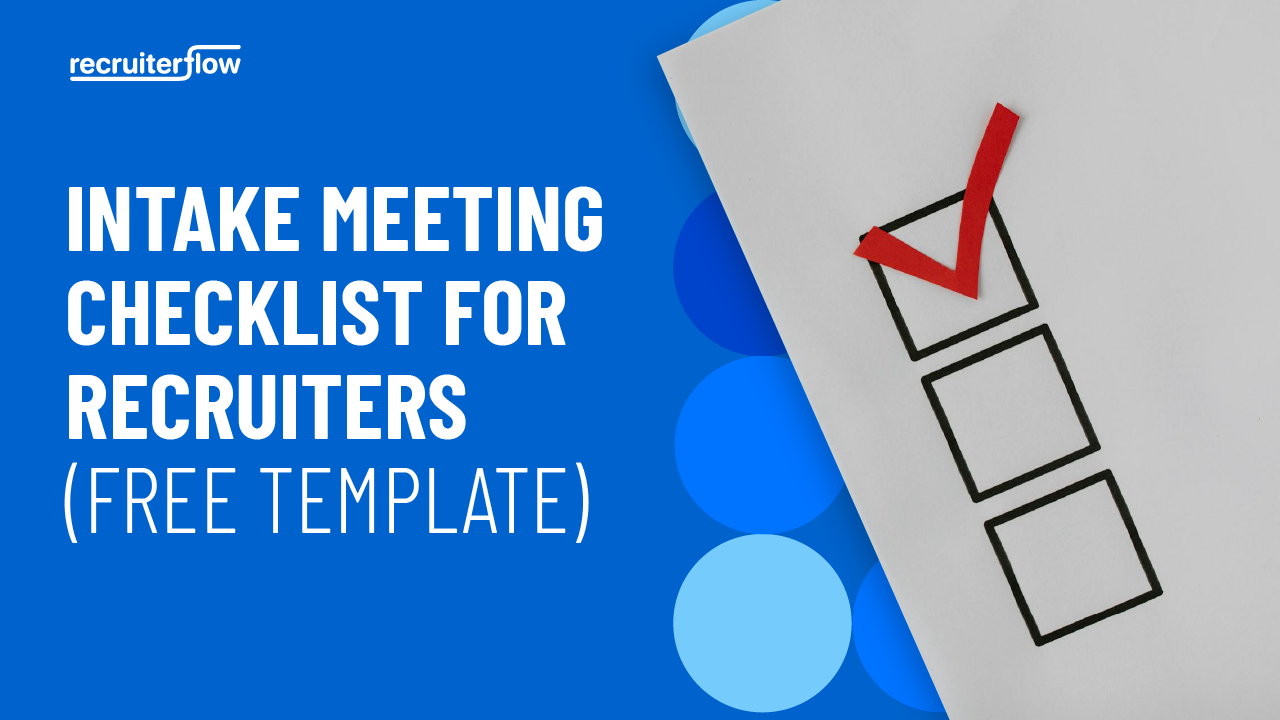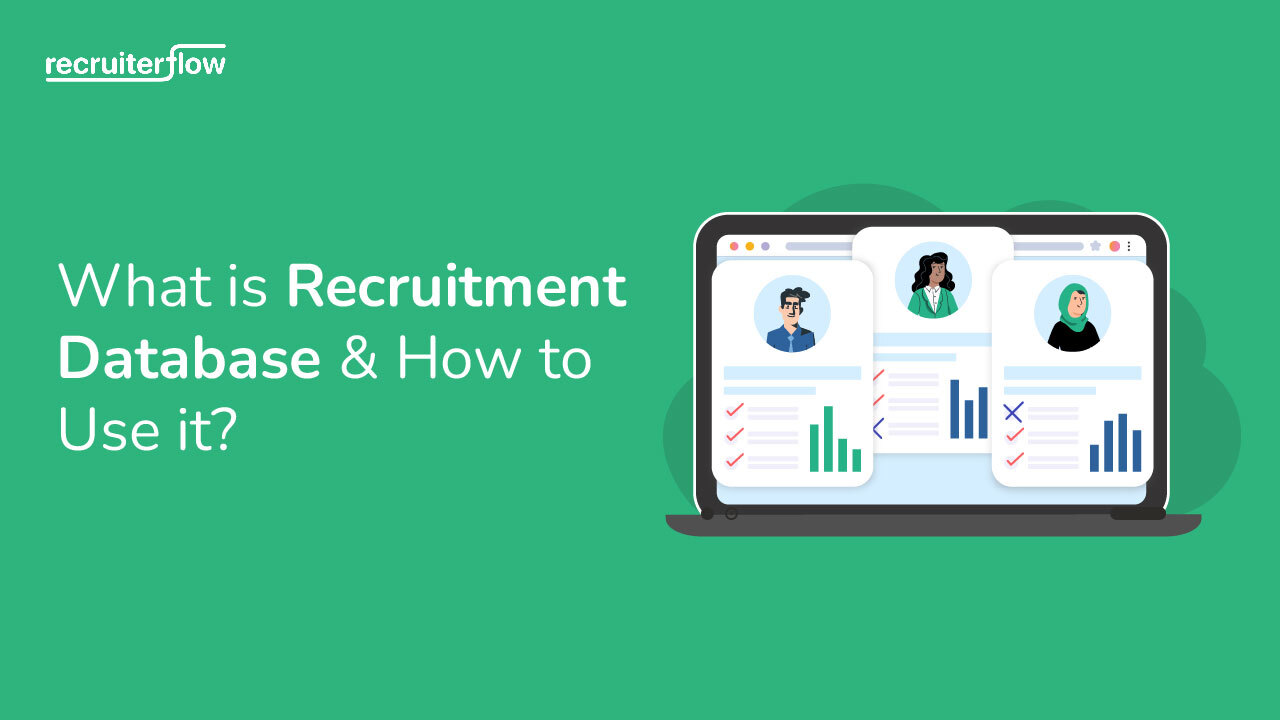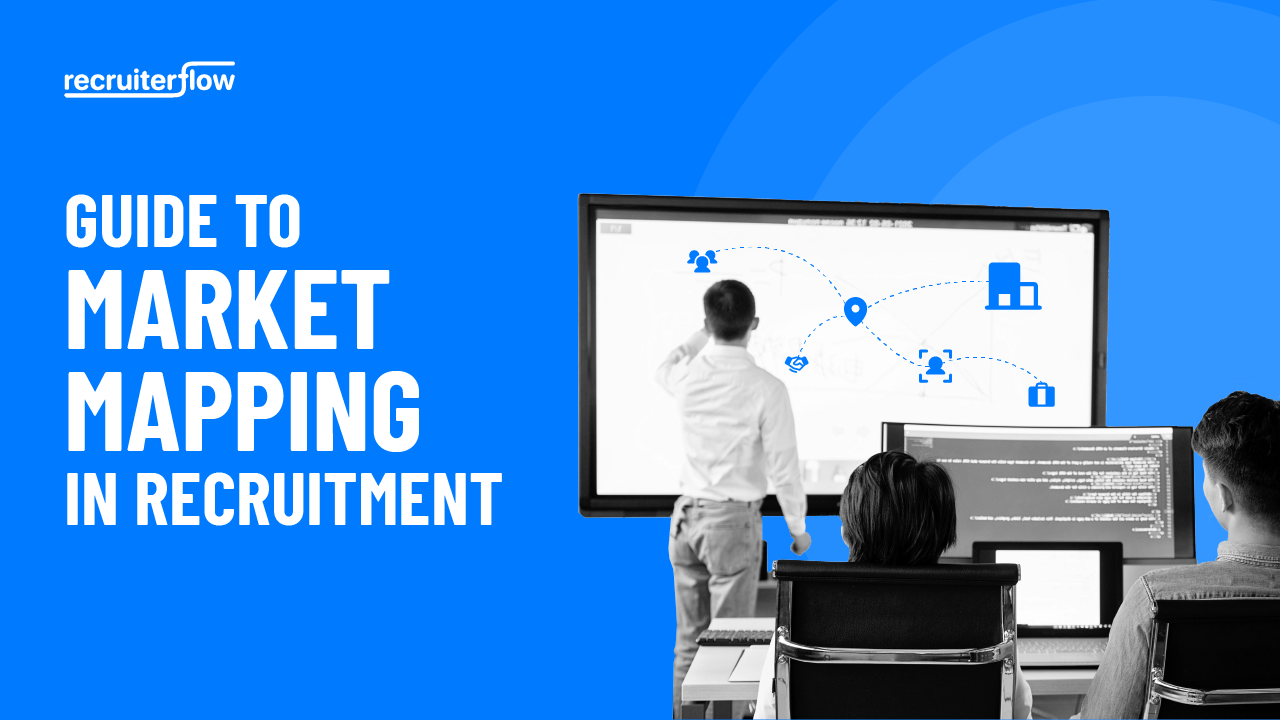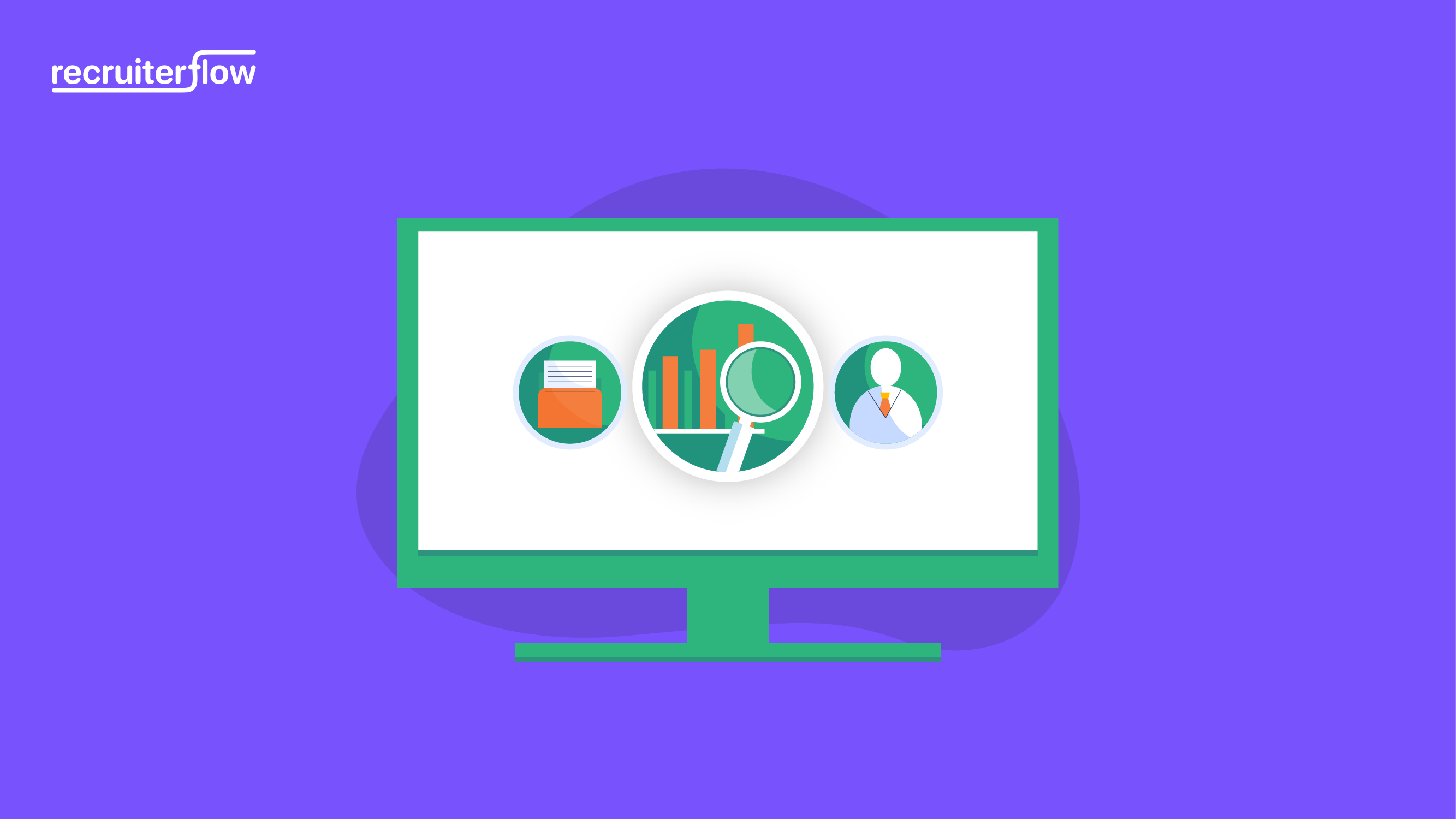
Recruitment Database: Your Key to Uncovering Top Talent

Recruitment database is an invaluable asset for building the foundation for your recruiting business’ success.
Imagine finding the perfect candidate in record time, leaving competitors in the dust. That’s the magic of a top-notch recruitment database!
As recruiters strive to meet the evolving needs of clients and candidates alike, investing in the right recruitment database can make all the difference.
Let’s delve deeper into what a recruitment database is and how to select the best recruitment software for your agency.
What is a recruitment database?
A recruitment database is a repository of candidate data that allows you to quickly source candidates whenever a new requirement comes up.
Let’s say, you need to urgently hire a software developer with a strong knowledge of C# and Dotnet. Manually sourcing them from different job platforms and storing candidate resumes on spreadsheets or emails would be time-consuming.
However, using a recruitment database, you can organize resumes based on relevant keywords, experience, and qualifications and quickly search for candidates with specific skills.
Benefits of using a recruitment database
Using a recruitment database can significantly enhance the efficiency and effectiveness of the hiring process.
Here are all the ways you can make the best use of it:
Access a massive pool of passive candidates
A Zippia survey says 73% of potential candidates are passive job seekers, open to hearing about the right opportunities and possibly applying to them.
Unlike traditional job posting sites that only attract active job seekers, a recruitment database allows you to access a diverse range of candidates, including those who might not be actively searching for jobs but possess the skills and experience your company needs. Identifying and engaging with these candidates can prepare you for meeting future talent needs and allow you to tap into a larger talent pool.
Reduce time to fill
A recruitment database streamlines the candidate selection process. It reduces over-reliance on job boards, as you don’t have to go through the complete hiring lifecycle to fill a new position. Instead of posting a job advertisement and waiting for candidates to apply, you can use your candidate database to match the right candidate with the job.
Save hours on admin tasks
The recruitment database is a time-saving powerhouse and reduces hours spent on administrative tasks.
- It eliminates the need for cumbersome storage methods like spreadsheets, emails, and hard drives.
- It centralizes candidate information in a searchable repository, so you don’t have to sift through scattered data sources.
Streamline team collaboration
A recruitment database facilitates seamless collaboration among the hiring team. Multiple team members can access and update candidate information in real time, eliminating the need for back-and-forth emails or manual updates on spreadsheets.
Recruitment database and applicant tracking system (ATS) – are they the same?
Both a recruiting database and ATS go hand in hand, but they’re not the same!
While a recruitment database organizes your recruitment data—including candidates interviewed in the past, freshly sourced candidates, and even client information, an ATS helps you supercharge the functions of your recruitment database.
Using ATS, you can leverage stored data in your recruitment database to enhance the overall efficiency and effectiveness of your hiring process.
For example, you can maintain communication with candidates throughout the recruitment process and track all your interactions with them. Additionally, you can unlock many advanced search capabilities with an ATS to shortlist candidates faster.
Best recruitment database software for recruiters (free and paid)
Here are some recruitment database software options, both free and paid, along with a brief context for each:
1. LinkedIn – A free recruitment database for recruiters
LinkedIn is an extensive database of professionals, with 49 million people searching for jobs every week! This vast talent pool provides recruiters with access to a diverse range of candidates across various industries and skill sets.
Pros
- You can reach a wide network (over 1 billion members) of professionals, which translates to a bigger pool of candidates
- Posting a job is free
Cons
- Basic search has limited features. You’ll need to upgrade to LinkedIn Sales Navigator or LinkedIn Recruiter to avail of advanced search capabilities.
- The platform has become increasingly competitive, making it difficult for employers to attract candidates.
Price: Free to use
2. LinkedIn Recruiter (Paid)
LinkedIn Recruiter is a specialized platform by LinkedIn for talent acquisition professionals to help them identify, engage with, and hire top talent effectively. It comes with 40+ advanced search filters to narrow your search and get you more precise results.
Pros
- You get in-mail credits, recruitment analytics, and collaboration features to get your recruitment drive up and running.
Cons
- It can be expensive for small businesses with limited budgets.
- Not all LinkedIn users have a complete and updated profile, which makes it difficult to assess a candidate’s skills—especially when you’re targeting passive candidates.
Price: Recruiter Lite starts at $170/month for a single license, while Recruiter Professional and Corporate are available at custom pricing
3. Ladders Recruiter
Ladders Recruiter is a job posting site for recruiters to find executive talents who are in their mid-career or late career. You can post and promote your job, source candidates, and reach out to them all in one platform.
Pros
- They have flexible pricing plans that cater to recruiters who are just looking to post jobs and those who would like to source candidates for a role. They even have plans for big enterprises looking to scale their hiring operations.
- Offers ATS integration but only in the enterprise plan.
- Hiring team subscribers get 1 free job post per month.
Cons
- It’s only applicable to candidates within the US and Canada.
- It facilitates hiring at all experience levels.
Price:
Jobs plan: Starts from $599 per job post
Sourcing plan: Starts from $299 / month
4. Talent Pool
Talent Pool is a candidate database management software that helps in managing and organizing candidate information, which includes resumes, interview notes, and communication history in a centralized location.
Pros
- Has candidate sourcing and tracking features
- Offers advanced search features
- Helps detect duplicate candidates from the database
- Cons
- It doesn’t support a complete hiring lifecycle
Price: Custom plans
How to choose the best recruitment database for your recruitment agency?
When selecting a recruitment database, it’s essential to prioritize features that align with your organization’s needs and goals.
Ask yourself these questions:
- Do you need a complete recruitment solution or only need to build a recruitment database?
- What other tools does it integrate with?
- Does the database integrate with ATS, video interview platforms, or HRIS systems?
- Is the database easy to operate and adapt?
- Does it offer customization options and scalability to accommodate your organization’s unique needs and future growth?
- Is the database just a centralized repository or does it also provide sourcing features?

Why choose an ATS with database integration?
In this day and age, an ATS is no longer a “nice-to-have” investment—it’s become a crucial part of the recruitment process for many organizations.
About 62% of recruiting teams that use an ATS have been able to find more highly qualified candidates compared to inbound job applications. By integrating it with your existing database, you can turn your database into a solid pipeline of potential hires.
We recommend you to select an ATS that allows native integration with the recruitment database to enhance its use in the following ways:
- Streamlining candidate tracking: You access and update candidate information directly from the ATS without switching between the two platforms.
- Offering access to a rich source of analytics: A recruitment database integrated with an ATS allows you to analyze trends, track key performance indicators (KPIs), and generate insightful reports to improve recruitment strategies.
- Maintaining a comprehensive history of candidate interactions: Recruiters can easily refer to previous communications, notes, and feedback, enabling personalized and informed interactions with candidates.
- Supporting scalability: As your organization grows, the integrated system can scale to accommodate increased data and user requirements. This ensures that the recruitment process remains efficient and effective even as the volume of candidates and job openings expands.
- Complying with data protection regulations: To further enhance data protection, implementing a VMware backup tool ensures that all critical information within the virtualized environments is securely backed up and easily recoverable. This integration ensures that sensitive candidate data is stored securely. It’s crucial for maintaining the trust of candidates and safeguarding the organization against potential legal issues.
How do you maintain a recruitment database??
Maintaining a recruitment database is essential for ensuring its accuracy, relevance, and effectiveness in supporting the recruitment process.
Here’s how you should go about it:
- Implement candidate segmentation for ease of search. You can classify them as:
- Candidates who apply to your posted jobs
- Candidates you pull into your ATS through third-party tools
- Candidates with a specific skill set, years of experience
- Automate data entry using an ATS with a parsing engine to extract information. It should be able to pre-populate fields in candidate, contact, and job records.
- Periodically screen candidates that are added to the database. However, remember to maintain quality candidates over quantity.
- Run a quality control check before adding candidate data to the database.
- Archive inactive candidates every now and then.
RecruiterFlow: Your complete recruitment software for transforming your recruiting business
When it comes to streamlining recruitment for agencies—be it from sourcing and storing candidate data to automating mundane recruitment processes—RecruiterFlow does it all!
While it doesn’t offer in-built database features, you have the option to integrate databases like LinkedIn Recruiter and BetterLeap, bringing advanced applicant tracking features to the table. Also, with features like pipeline management, access control, advanced search, tagging, resume parsing, and formatting, you can enhance the functionality of your existing database and deliver better results to your clients.
Book a demo with RecruiterFlow today!
Recruitment




